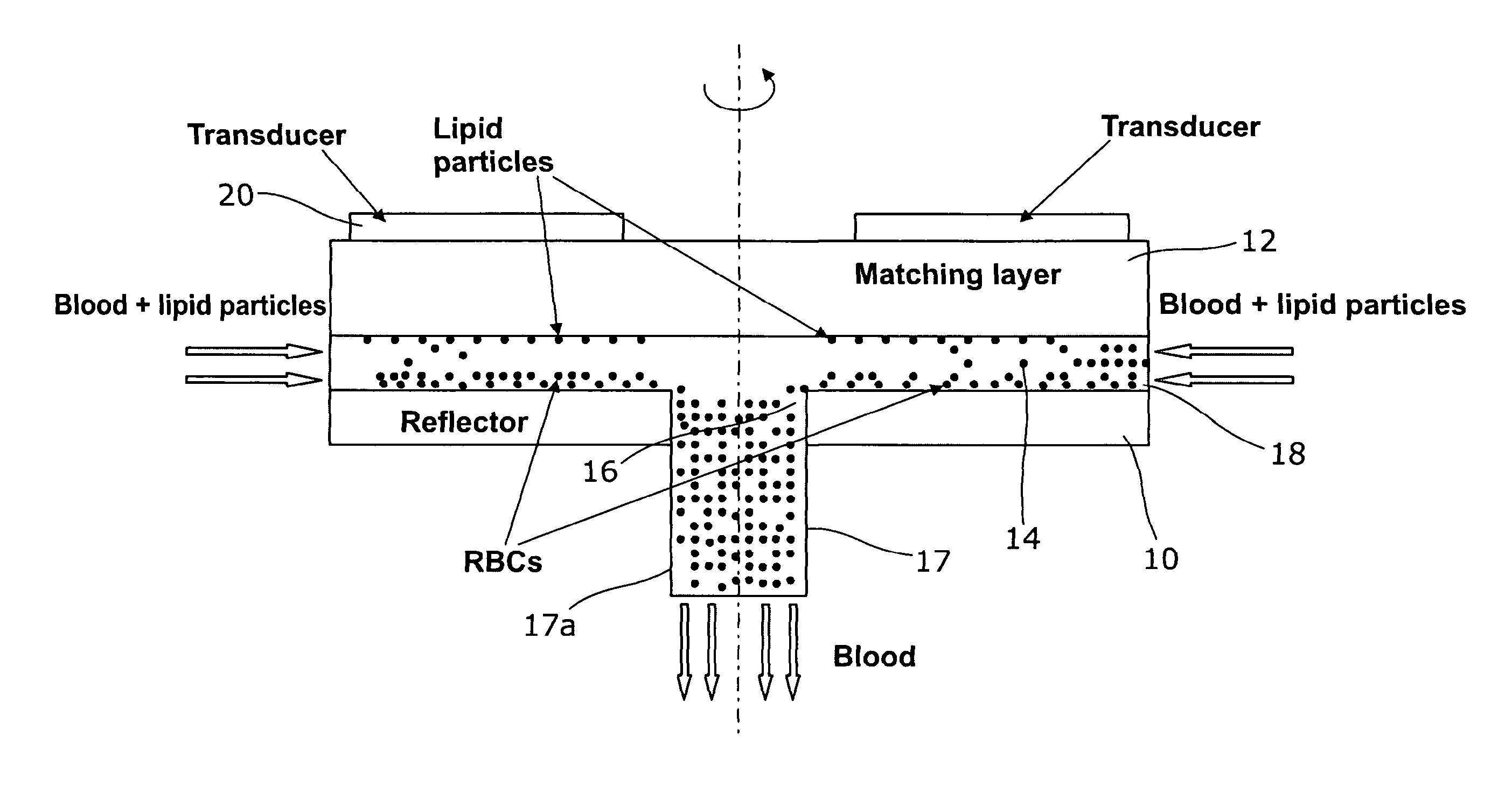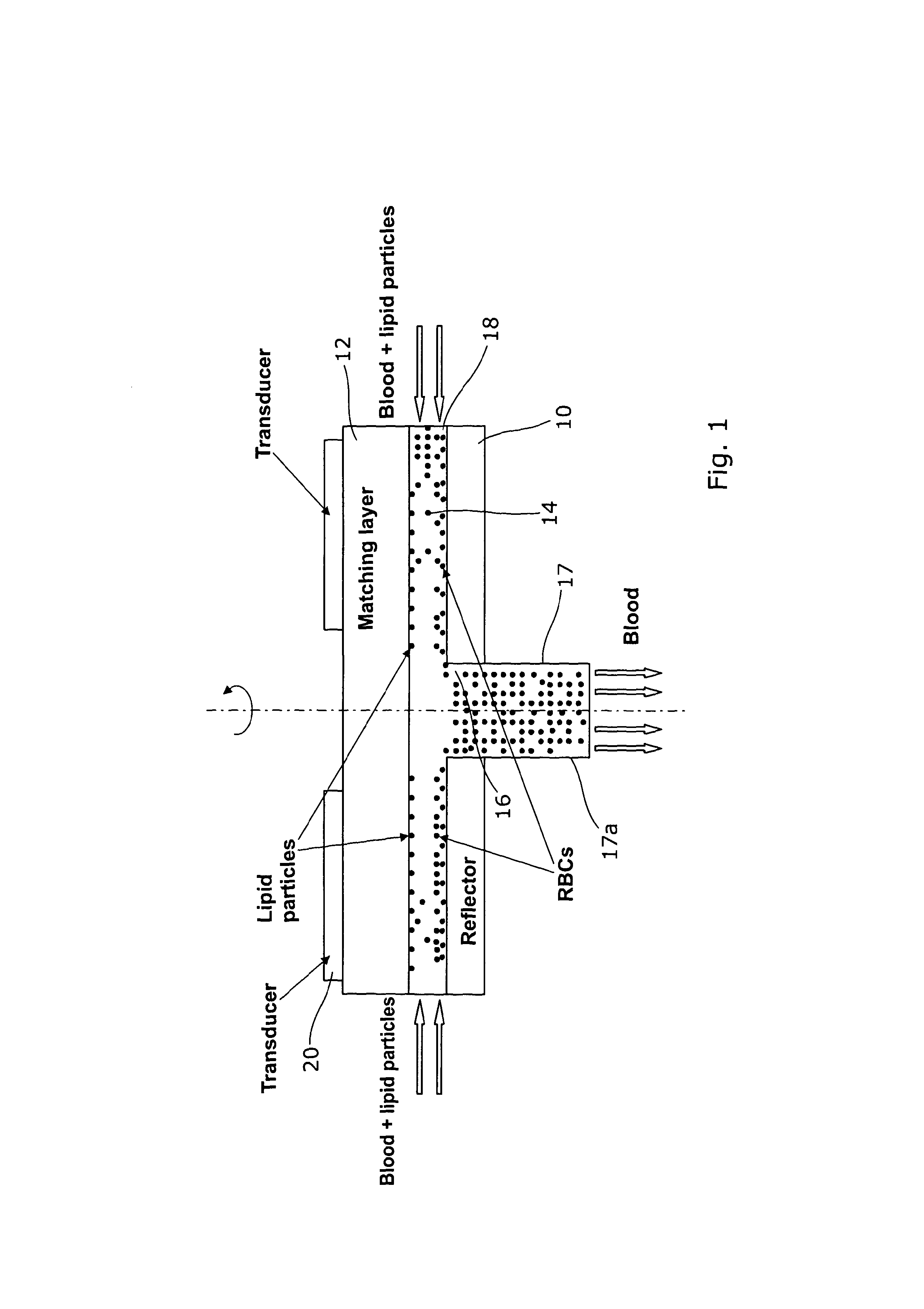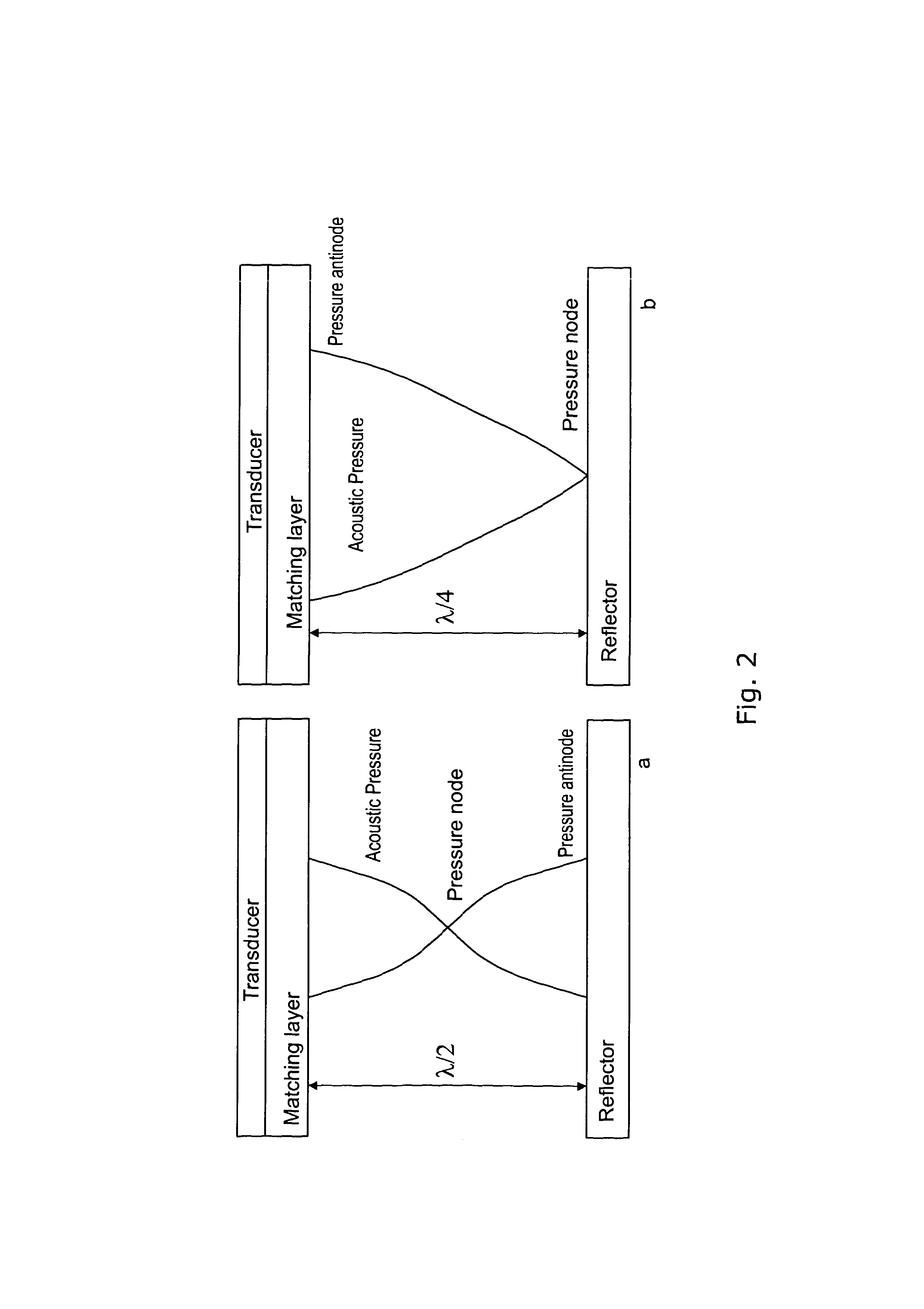Acoustic separators
a technology of acoustic separator and separator plate, which is applied in the direction of mechanical vibration separation, separation process, manufacturing tools, etc., can solve the problems of not finding a solution to separate and manipulate different particles of similar sizes, operating in batch mode, and not in continuous flow
- Summary
- Abstract
- Description
- Claims
- Application Information
AI Technical Summary
Benefits of technology
Problems solved by technology
Method used
Image
Examples
Embodiment Construction
[0035]Referring to FIG. 1, an acoustic separator according to an embodiment of the invention comprises two parallel circular plates 10, 12 which form two side walls, defining a separation chamber 14 between them. The lower plate 10 has an aperture 16 in its centre which forms an outlet. An outlet duct 17 extends from the outlet 16 in the downward direction, perpendicular to the plates 10, 12. The side walls 17a of the outlet duct are joined to the lower plate 10 around the edge of the outlet 16 and extend downwards, perpendicular to the plates 10, 12. The radially outer edge of the separation chamber 14 forms an inlet 18 so that, in operation, fluid flows radially inwards from the edge of the separation chamber 14, and then turns through a right angle and flows axially outwards through the outlet 16. An annular piezoelectric transducer 20 is located on top of the upper plate 12 and is arranged to vibrate in the vertical direction transmitting acoustic waves vertically downwards thro...
PUM
| Property | Measurement | Unit |
|---|---|---|
| size | aaaaa | aaaaa |
| diameter | aaaaa | aaaaa |
| particle size | aaaaa | aaaaa |
Abstract
Description
Claims
Application Information
 Login to View More
Login to View More - R&D
- Intellectual Property
- Life Sciences
- Materials
- Tech Scout
- Unparalleled Data Quality
- Higher Quality Content
- 60% Fewer Hallucinations
Browse by: Latest US Patents, China's latest patents, Technical Efficacy Thesaurus, Application Domain, Technology Topic, Popular Technical Reports.
© 2025 PatSnap. All rights reserved.Legal|Privacy policy|Modern Slavery Act Transparency Statement|Sitemap|About US| Contact US: help@patsnap.com



